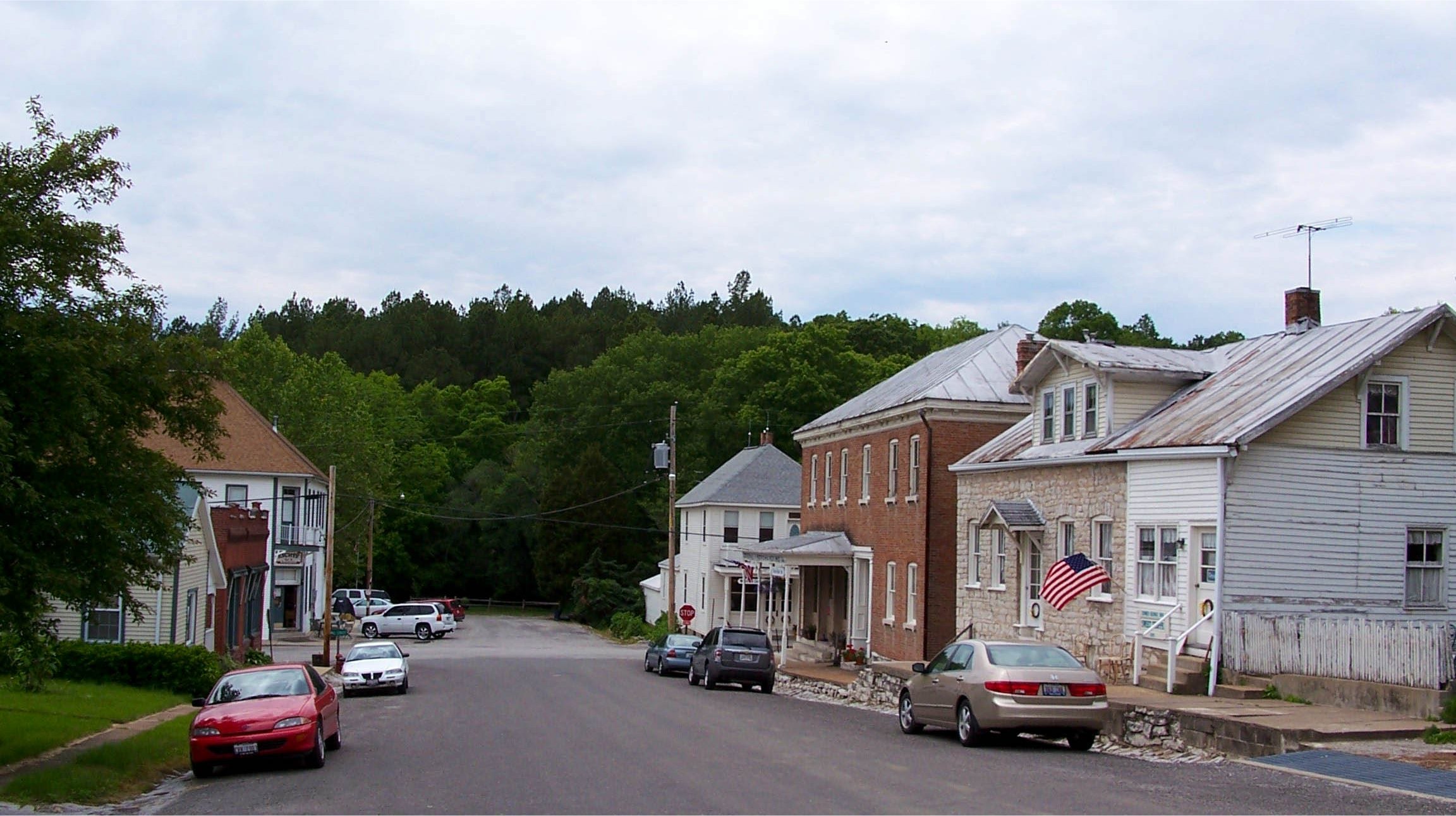13041 MO-104
Entrance is 8 miles south of DeSoto on State Highway 21
DeSoto, Missouri
636-586-0322
One of many overlooks at Washington State Park
Petroglyph interpretation site
Washington State Park is located in the eastern Ozarks region of Missouri along the Big River. The park is rich in both history and prehistory. Two-thirds of Missouri’s known petroglyphs, or rock carvings, can be found at Washington State Park. The park was the location of prehistoric ceremonies associated with the Native American culture that archaeologists call the Mississippian and the petroglyphs help in understanding the lives of these people who are believed to have inhabited the area around 1,000 A.D. A handicapped accessible platform with interpretive signage (photo left) allows visitors to see these remnants of a past civilization. Because of the number and extraordinary quality of the carvings, these sites were placed on the National Register of Historic Places in 1970. Washington State Park is also the site of many Depression era Civilian Conservation Corps (CCC) structures. Shortly after the land was donated to the state for a park in 1932, an African-American company of the Civilian Conservation Corps began to develop the area. Inspired by Indian petroglyphs in the park, the all-black company named their barracks "Camp Thunderbird," and continued that theme at the former dining lodge, which now serves as a camper store and snack bar. The lodge has an Indian thunderbird symbol carved in its stone chimney, and the theme is repeated in the handmade iron door hinges. The stonemasons also did extensive roadside work, laid stone for what is known as the 1,000 Steps Trail, and worked on 14 buildings, including an octagonal lookout shelter with an interesting rustic design. Because of the exceptional quality of their craftsmanship in stone these buildings were placed on the National Register of Historic Places in 1985.
The 1875-acre park is also noted for its natural beauty with both the characteristics and unique features of the eastern Ozarks. The Washington State Park Hardwoods Natural Area has a wide assortment of trees including Kentucky coffee, sugar maple, and slippery elm trees. On the hills and bluffs are limestone glades and savannas and the area looks the same as it did before the arrival of European settlers. These open forests and sparse grasslands contain trees that are often quite small, even though they may be more than 200 years old. Washington State Park is considered to be one of the best state parks in Missouri to visit to see wildflowers with the 1.5-mile long 1,000 Steps Trail leading to one of Missouri’s most spectacular spring wildflower displays. The Opossum Track Trail is a 2.5-mile loop trail that provides outstanding views of the Big River valley and the rugged 6-mile Rockywood Trail is designed for both hiking and backpacking use.
The Big River is a popular feature of the park. The river flows under towering dolomite bluffs and is used as a floating and canoeing waterway. Anglers can often be seen catching bass, catfish, bluegill and carp. Swimmers and sunbathers have a choice between a natural gravel bar in the river or an Olympic-size swimming pool. A picnic gazebo located at the scenic overlook provides a majestic view of the Big River and surrounding area. During the summer, naturalist-led programs explain the significance of the park features. The nature center building is located next to the park office near the north entrance of the park and is open from sunrise to sunset year-round.
Bird Watching
Washington State Park is considered a hot spot during the spring migration season whit a variety of warblers and thrushes stopping at the park. State Park has a wide variety of habitats including native hardwood forest, limestone glades, savannas, and gravel access to the Big River. This variety provides nesting opportunities for both residents and summer breeders including a variety of warblers. Three trails that provide access to different habitats, including the Washington State Park Hardwood Natural Area. The Audubon Society of Missouri maintains a checklist for birds that can be seen at the park.
Camping and Rentals
The park has basic and improved campsites at the campground as well as air-conditioned cabins with fully equipped kitchens available for rent. Use the Missouri State Parks website for camping information.
Visiting Washington State Park
The park grounds are open from sunrise to sunset year-round.
There is no fee to visit the Washington State Park; rental fees apply for certain services.
Explore the community of DeSoto, Missouri area.
















